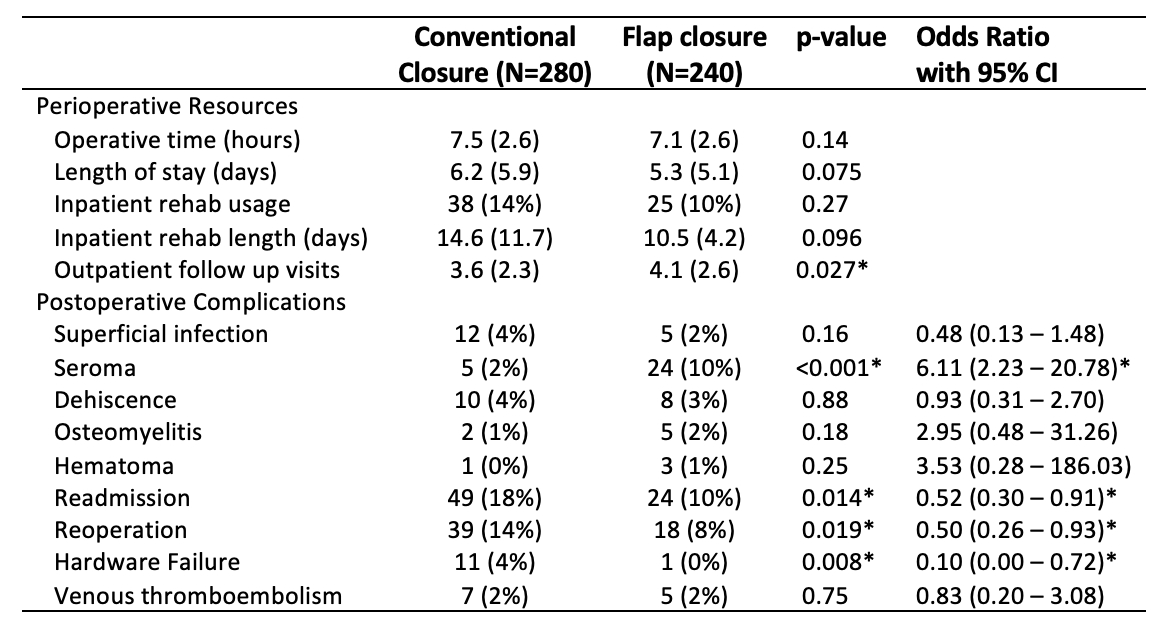Muscling Out Complications and Costs: The Benefits of Muscle Flap Closure in Posterior Spinal Fusion
Grant G. Black*1, Makayla Kochheiser1, Yunchan Chen1, Matthew A. Wright1, Michael S. Virk2, Ali Jalali3, David Otterburn1
1Plastic and Reconstructive Surgery, Weill Cornell Medicine, New York, NY; 2Neurological Surgery, Weill Cornell Medicine, New York, NY; 3Population Health Sciences, Weill Cornell Medicine, New York, NY
Spinal degeneration and deformities have a prevalence of over 27% in US adults, and $34 billion is spent annually on spinal fusion to address these pathologies. Wound closure after fusion using local muscle flaps has been associated with reduced rates of complications, including infection and reoperation. The high prevalence of degenerative deformities and subsequent healthcare expenditures highlight the need for resource utilization studies to inform decision-makers on best operative practices.
A retrospective review was performed on adult patients at our institution who underwent posterior spinal fusion due to degenerative or deforming changes between 2019 and 2022. Patients were stratified by the prophylactic use of muscle flap closure, and outcomes were compared between groups. Costs were applied to consumed resources, and univariate and multivariate regressions were performed to measure the impact of muscle flaps on overall costs.
520 patients were included in the study. 372 (72%) had spondylosis and 148 (28%) had scoliosis. 240 patients received muscle flap closure and 280 received conventional closure. These cohorts were similar in terms of sex, race, ethnicity, BMI, indication, and length of fusion. Patients who received flaps had significantly fewer readmissions (10% vs 18%, OR 0.52, p<0.02), reoperations (8% vs. 14%, OR 0.50, p<0.02), and hardware failures (0% vs. 4%, OR 0.10, p<0.01), but did experience greater incidence of seroma (10% vs 2%, OR 6.11, p<0.01). Operative time and hospital length of stay did not vary by closure type. After controlling for independently significant factors in the multivariate regression model, muscle flap closure was associated with a $7,152 reduction in overall costs per patient (p<0.03).
Muscle flap closure after posterior spinal fusion correlates with reduced complication rates while also leading to decreased overall costs per patient. These findings support the use of prophylactic muscle flap closure after PSF from both patient outcomes and healthcare economics perspectives.
This table shows the peri- and post-operative resources used, and complications after spinal fusion, stratified by the use of muscle flap closure. Muscle flap closure led to significantly less hardware failure, readmission, and reoperation rates, and higher seroma rate.
Back to 2023 Abstracts


